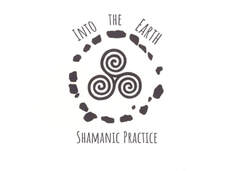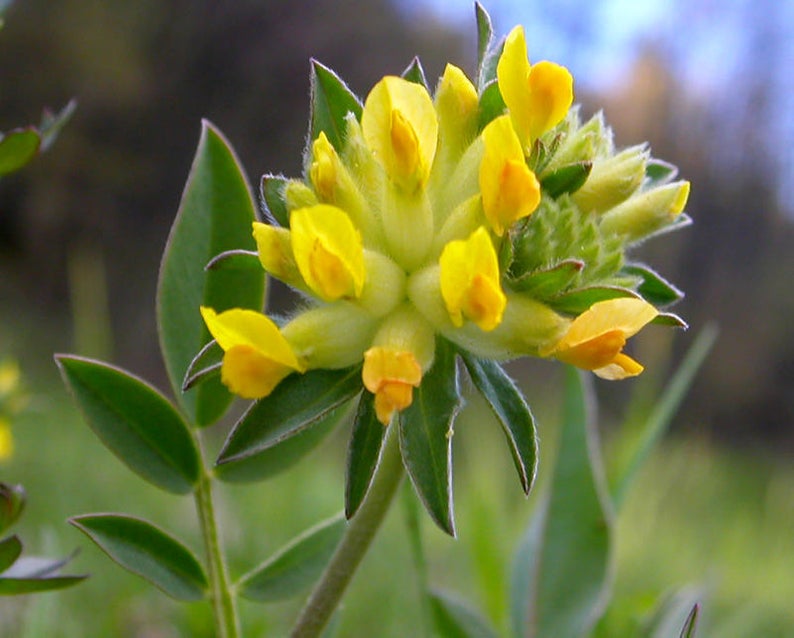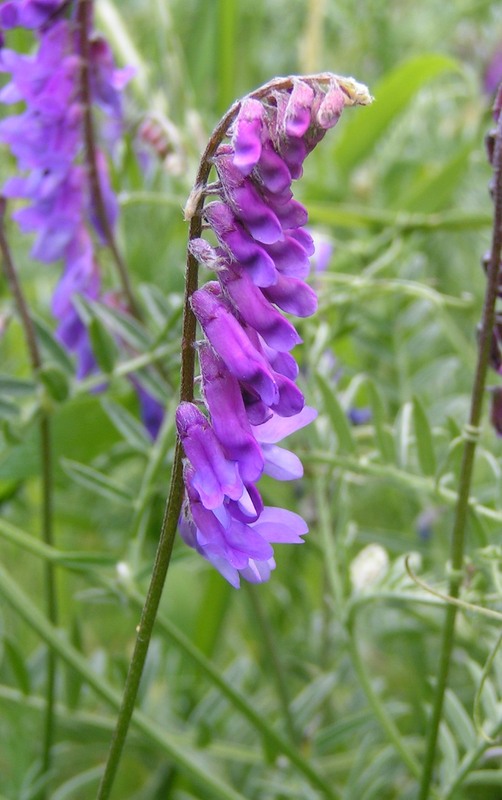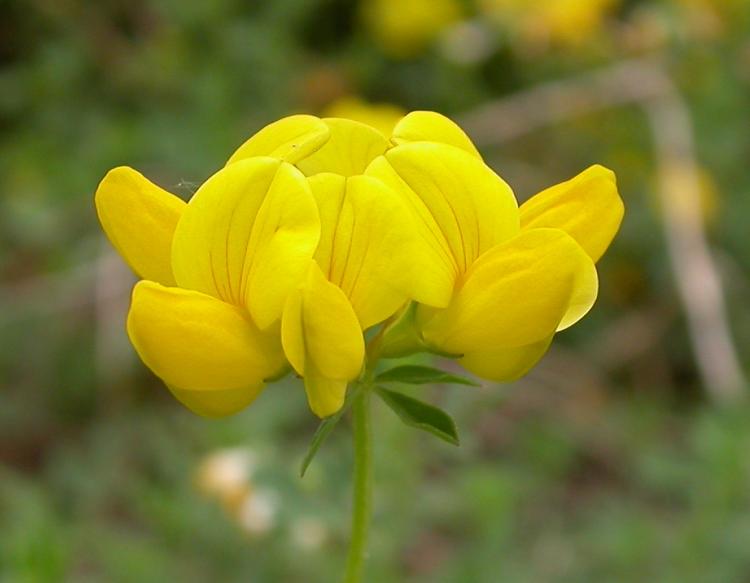|
Kidney Vetch Tufted Vetch Bird's foot trefoil. little peas of the DownsOut on the Downs I visit rich meadows filled with fragrant and pyramidal orchids surrounded by a lush verdure and sprinkled with yellow and purple gems of the the pea family ‘Fabaceae’.
The orchids are now fading as I write this and the purple knapweed, willowherbs and agrimony continue to delight the eye whilst still little peas unfold unperturbed by the summer heat scrambling through grassy fields. The South Downs are my home and as I view the undulating hills, cross brooks and streams and the occasional ford and walk down into the picturesque valleys, I then kneel down and examine the flowers and my whole world stops. The worries, torments and jobs to do disappear into a purple and yellow haze of pea flowers. Studying flowers takes me to a place that every artist and musician understands, a place beyond all human endeavour and desire where my world is complete just as it is. I do not wish to own, travel, discuss, want more of or collect these flowers I just feel content and free as my mind stops in the beauty before me. ‘Beauty beyond thought everywhere, beneath, above, made and being made forever.’ John Muir Being made forever that is nature’s gift although now this gift must be preserved with more vigour than ever before, evidenced in the grass sward just yards from the flowering meadow which is devoid of a single flower, a green desert of failed beauty. I must not deny this truth that nature is being destroyed and I must work tirelessly to give a helping hand to the plants that I love, but also I must find time to soak up her beauty. So now let’s explore ‘Little peas’. The flower of these plants are undeniably distinctive especially if memories of sweet peas grown in the garden or the eating of field peas in farmer’s fields spring to mind. However the peas I speak of provide valuable food not in their fruit but in their delightful flowers made of two wings and a keel. The bee lands on the keel ( bottom petal) the wings ( petals each side) spread and the bee takes a fill of pure nectar. Colour and scent are the attraction and pure nectar the reward, this phenomenon could not be dreamt up in the greatest novel, it is a tiny yet vast world where beauty reigns supreme. Yes of course nature matches this beauty with death, decay and suffering but can we deny the contentment that comes from nature. To quote from John Muir once more: ‘Earth has no sorrow that earth cannot heal.’ John Muir who is not spoken of enough is known as the the founding father of the World Conservation movement and although he felt terrible pain at the destruction of wild areas and dedicated his life to its preservation he also felt the tremendous joy only possible when one immerses in nature! Therefore go to a meadow and spot the purple and yellow pea flowers of vetches and trefoils, look up the names of tufted, horseshoe and kidney vetch, birds-foot trefoil, everlasting peas, medick and melilot and take out a good field guide or go on a local walk with an expert in your area. You may wish to leave the guide book at home and leave the naming to others as you soak in the beauty. If you would like to support our work and go even more deeply into Nature Connection please become a member and have exclusive access to our online course.
0 Comments
Leave a Reply. |
Details
Poetry of flowersJoin me to explore the flora of the British Isles on this blog. My intention is to attempt to capture the unique quality and beauty of each species of flower, tree or shrub. For every species featured I will be growing many more wildflowers to celebrate the joy of their existence, their intrinsic conservation value and bewildering array of uses. For nearly 30 years I have noted, studied and explored wildflowers in the field much to the patience of the walker beside me. To share this passion is a heartfelt plea to respect, preserve and care for all British Wildflowers no matter how common they seem. Archives
February 2024
Categories |




 RSS Feed
RSS Feed
